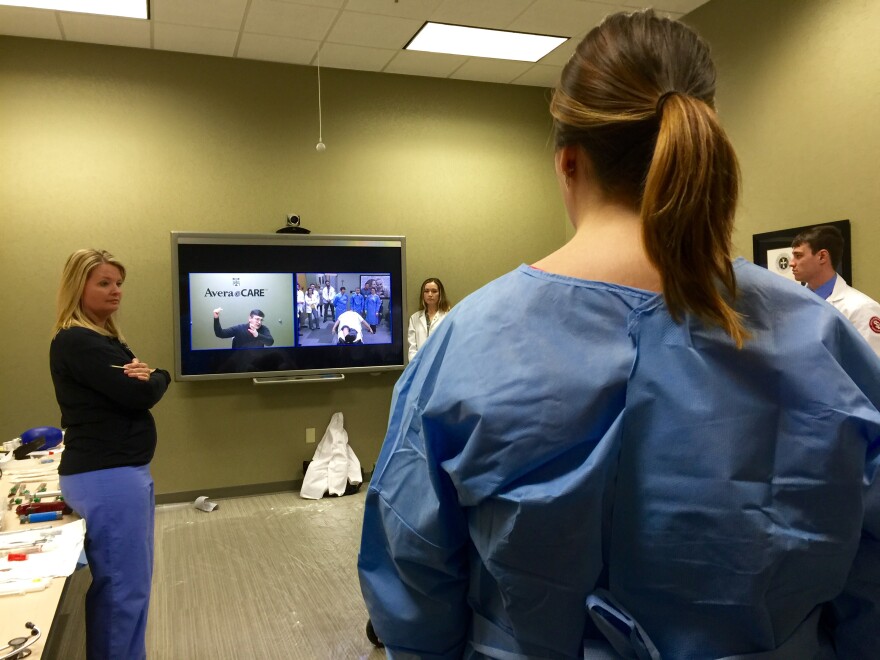First-year medical students are tapping into new technologies that support health providers in rural areas. Avera’s eCare facility provides live video access to specialists and emergency physicians to support providers in different circumstances. Some students say it makes them more confident in pursuing work in rural medicine.
Medical students in short white coats surround a mannequin. Three volunteers in blue paper gowns take direction from a physician on a TV screen who walks them through life-saving techniques.

"And then you’re gonna take your clamped chest tube – so you’re gonna palm it like this – and you’re gonna take that, in real life, you’re gonna take that right where your hand is where you want to go, your left hand, and you’re gonna punch right through those intercostal muscles," explains a doctor over the digital connection.
Becca Jarratt is a first-year student at Sanford School of Medicine. She says most of her training so far hasn’t been with patients, but she still managed to accomplish a procedure with basic knowledge. Jarratt says telemedicine is particulary important in rural America.
"Obviously there’s not always going to be who needs to be on staff or know exactly how to do every single different procedure, so using this conferencing system is something that I think is, really, extremely useful," Jarratt says.

Jarratt says immediate access to an experienced specialist makes her more seriously consider practicing in a smaller medical center.
"Having someone come in, you know, on the video screen, and telling you exactly how to step-by-step take care of this situation definitely makes you feel more comfortable – especially if you’re the only physician on that day. That would make me feel a lot better."
Jarratt says medical students now are accustomed to technology, so they welcome the opportunity for live support.
Dr. Kelly Rhone is the medical director for eEmergency at Avera. She says digital connections can improve patient care, especially because medicine is more complicated now than even fifteen years ago.

"When you went into rural practice, you were on your own. I mean, really, essentially until the helicopter got there you were really on your own. That is not the case these days," Rhone says. "Really, we can be there at just the touch of a button to help these people just do things that maybe they don’t do everyday."
Rhone says people – not physicians – because medical workers who are not doctors can access Avera eCare’s experts, too. When providers push the red button, a live video link connects them with an experienced physician right in a patient’s room. That means nurses and other staff members can get direction even before the local doctor arrives at the clinic or hospital.
"So if you’re having a massive heart attack and we can be there and see that EKG right away while the provider’s on their way in, I can get a helicopter to you then 10 minutes earlier, because I’ve already seen that EKG right away, I know what’s going. I can get medications ordered for you. Whereas before you may have waited that extra ten minutes, and, when you’re having a big heart attack, that’s a big deal," Rhone says.
Health providers say that translates into efficient care that saves lives.
Avera’s eCare services provide help to medical centers in 10 states including South Dakota.




